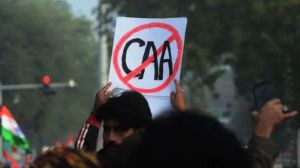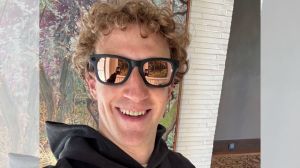Montage of pure grief faces the naked truth
The statues grimace, scream, tear at their hair and skin. Several have collapsed in agony. Others cry and rage at the heavens.

The statues grimace, scream, tear at their hair and skin. Several have collapsed in agony. Others cry and rage at the heavens.
There are 76 of them: oversize figures of women, most modeled from real life and depicting the moment they learned that their loved ones had been killed in the terrorist bombing of Pan Am Flight 103. All are nudes. Or as their creator prefers to put it, they are “stripped” or “unclothed” in the equality of anguish.
New York sculptor Suse Lowenstein, herself one of the models, went before the National Capital Memorials Advisory Commission this week to argue that her wrenching sculpture, “Dark Elegy,” should become a national memorial to victims of terrorism, located in Washington. During an emotional hearing attended by weeping relatives of those who perished in the 1988 bombing over Lockerbie, Scotland, Lowenstein and her supporters contended that the women of “Dark Elegy” were as heroic as figures in existing memorials and could one day become national icons.
But the seven members of the commission, which advises the federal government on commemorative works in and around Washington, on Monday unanimously rejected the proposal. They said they feared the nude statues might offend some sensibilities, might be liable to coarse vandalism and might be too specific to Lockerbie to symbolize victims of all terrorism attacks.
Carole Johnson of Greensburg, Pennsylvania, who lost her daughter Beth Ann, 21, attributed the decision to the commission’s desire to please everyone. “There’s no way you’re going to get general agreement among everyone,” she said. Johnson, who sobbed during parts of the hearing and wore a pendant containing her daughter’s picture, was one of the scores of models Lowenstein asked to re-enact the instant they learned their loved one’s fate. “My figure is one of me throwing the phone,” Johnson said.
The members of the commission, which represents the National Park Service, the District, the Commission of Fine Arts, the National Capital Planning Commission and other agencies, were sympathetic and moved by the testimony. “We can’t know your grief,” said Thomas Luebke, the representative of the arts commission. “What we say here today in no way demeans your experience.”
Several commissioners thought a national memorial to the ongoing plague of terrorism ought to be more abstract and timeless. “How far do you carry personal anguish?” asked Michael Turnbull, the representative of the Architect of the Capitol.
Lowenstein, 64, said in a telephone interview before the meeting that she began the sculpture the year after her son, Alexander, 21, was killed aboard Flight 103, which was blown up December 21, 1988, killing 270 people. She has a younger son, Lucas.
“I started portraying myself, basically, as a mother whose child was murdered,” she said, “and what the emotions are that accompany such an event.”
The figures are unclothed because each such victim of terrorism is reduced to the same level, regardless of skin color or economic status, she said: “People are truly stripped to the core.”
Completed three years ago, the sculpture can now be seen by the public in a garden at the Montauk, New York, home of Lowenstein and her husband, Peter.
The figures, each weighing more than 200 pounds, have skeletons of welded steel and chicken wire, and are covered with a painted synthetic substance that resembles plaster bandages. Lowenstein wants a bronze version to be cast and placed somewhere in Washington.



- 01
- 02
- 03
- 04
- 05




























